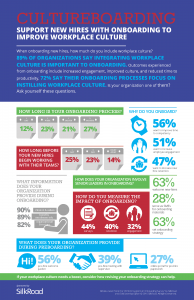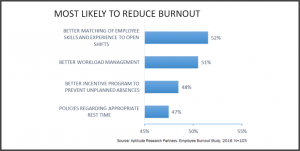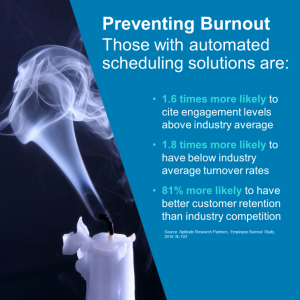Sharlyn J. Lauby's Blog, page 151
September 4, 2016
Everything #HR Needs to Know About HR Technology
It totally makes sense to recognize the thing that makes our businesses unique.
Our people!
People also make your business productive. So I thought I would round up a series of posts on something that people just can’t live without these days – technology. Employees use technology to find a job, get onboarded, receive training, and much more.
HR technology solutions are getting more complex by the minute. Primarily because technology is moving at such a rapid pace. So if you’re wondering about all those tech terms and acronyms, here are some posts that can help.
Application Program Interface (API)
These days, HR pros need to know a lot about technology. To help, we asked the experts at SilkRoad to share their knowledge and expertise about API.
Cloud Computing (aka The Cloud)
The cloud – or cloud computing – is permeating almost every aspect of HR technology. To learn everything about the cloud, we ask Kronos to fill us in.
Human Capital Management (HCM)
HR technology is a growing field. It can get pretty confusing. To help, Bill Kutik, co-founder of the HR Technology Conference shares everything HR needs to know about Cloud HCM.
Search Engine Optimization (SEO)
SEO isn’t just for marketers. HR pros need to know about SEO. So we asked Susan Vitale at iCIMS to share everything HR needs to know about SEO.
SaaS – software as a service – is a term we’ve all heard before. But what is it exactly? The experts at HR Direct tell everything to know about SaaS.
The Internet of Things – or IoT – is the latest technology term for HR pros. It’s all about connectivity but it’s much more than that.
HR pros need to know about software user experience (UX). Ultimate Software’s Martin Hartshorne tells us everything HR needs to know about user experience.
Organizations do not have to choose between people and technology. They are both important and should peacefully exist together to benefit the business.
Image courtesy of Sharlyn Lauby
The post Everything #HR Needs to Know About HR Technology appeared first on hr bartender.






September 2, 2016
Culture Fit Is the First Step to Successful Onboarding [infographic] – Friday Distraction
If you haven’t seen it, there’s an interesting article over on the Harvard Business Review blog titled, “Don’t Let Your Company Culture Just Happen.” My big takeaway from the article was that in order for employees to be engaged, they have to fit with the culture. Meaning that cultural fit needs to be an important part of the recruiting process.
There are lots of companies that do this – hire for attitude and fit, train for skills. But for some organizations, this can be a real shift in recruiting philosophy.
Our friends at SilkRoad recently released a report on “The Who, How, and Why of Onboarding.” I found it interesting because it used a term I hadn’t heard before but immediately fell in love with – cultureboarding. It’s when the onboarding process focuses on instilling workplace culture. And it’s not limited to regular full-time workers. Cultureboarding includes contingent workers and strategic partners.
One data point in the infographic that caught my attention was on measuring the impact of onboarding. The reason it caught my eye was not because of the methods being used to gather the data, but that all three methods were at less than 50 percent. If engagement is predicated on cultural fit, and the way employees learn about culture is through activities like cultureboarding, then isn’t it essential to measure the effectiveness of onboarding? It makes me wonder what obstacles exist within organizations to measuring onboarding.
Granted cultureboarding is probably considered a subset of onboarding, just like recruiting and pre-boarding. But the distinction is important. Does the organization’s onboarding process include a culture component? Where are they in the process (before, during, after hire)? What pieces of the company culture do part-time, seasonal, freelancers, and contractors need to know in order to be successful? It’s a worthwhile conversation.
The post Culture Fit Is the First Step to Successful Onboarding [infographic] – Friday Distraction appeared first on hr bartender.






September 1, 2016
The Value of Modified Duty Programs – Ask #HR Bartender
I’ve mentioned in earlier posts that I was involved in a pretty serious auto accident a long time ago. My recovery took years. Fortunately, I worked for an employer that was open to modified duty. It sounds like this employer is as well.
Any thoughts about using off-site, non-profits or charities to accommodate modified duty for an injured worker? We’re located in California and just can’t find any in-house options for truck driver’s with injured legs. Your help would be appreciated.
In this specific example, we don’t know if the injury happened on- or off-the-job. But there are some common elements to modified duty programs. So I asked Margaret Spence, president and CEO of C. Douglas & Associates, Inc. a national workers’ compensation and human resources consulting company. She’s the author of two books: “From Workers Comp Claimant to Valued Employee” and “The Injury Management Challenge.”
I’ve had the opportunity to work with Margaret while serving on the Society for Human Resource Management (SHRM) special expertise panels and I’m grateful that she dropped everything to share her knowledge with us. Please remember that her comments should not be construed as legal advice or professional consulting. If you have detailed questions, you should address them directly with your labor attorney or professional services consultant.
First, let’s define what modified duty means? And is it exclusive to worker’s compensation situations?
[Spence] A return-to-work program is designed to facilitate the return of an injured employee to work as soon as he or she is able to perform meaningful, productive work within the restrictions imposed by the treating physician.
‘Modified Duty’ refers to changing or removing some tasks from the employee’s normal duties so they can continue working in the regular work area.
‘Alternate Position’ or ‘Alternative Duty’ refers to a temporary position that can be used to accommodate most injuries within your work environment.
Over the years, the workers’ compensation system has given the return-to-work process many names: modified duty, light duty, limited duty, alternative duty, restricted duty, stay at work program, transitional duty or transitional work. These terms all mean the same thing—returning an injured employee to a meaningful job until they are able to return to their regular position. These positions are generally of short duration and should be a temporary option.
The term modified duty is generally exclusive to workers’ compensation but can also be used when accommodating an employee under the Americans with Disabilities Act (ADA.)
Why should organizations have modified duty assignments and programs?
 [Spence] When an employee remains off work after an accident the employers cost of doing business rises. Unfortunately, employers are not in a win-win situation when it comes to workplace injuries. If you leave the employee at home, the insurance carrier pays them to be there. This, in turn, affects the amount of money your company pays for workers’ compensation premiums. If you refuse to bring the employee back to work, you may be in violation of the ADA. If you bring the employee back to work in a nonproductive light-duty position that has them counting paperclips, you are paying state and federal taxes as well as benefits for an employee who is not contributing anything to your bottom line.
[Spence] When an employee remains off work after an accident the employers cost of doing business rises. Unfortunately, employers are not in a win-win situation when it comes to workplace injuries. If you leave the employee at home, the insurance carrier pays them to be there. This, in turn, affects the amount of money your company pays for workers’ compensation premiums. If you refuse to bring the employee back to work, you may be in violation of the ADA. If you bring the employee back to work in a nonproductive light-duty position that has them counting paperclips, you are paying state and federal taxes as well as benefits for an employee who is not contributing anything to your bottom line.
The National Safety Council estimates that there are more than 80,000,000 lost work days due to occupational injuries or illness. This is a billion-dollar problem for the American workforce. Annually employers spend about $62 Billion on workers’ compensation costs – that is over $1 Billion dollars each week. Implementing a proactive return to work program is essential for retention, employee morale and to show that we care about employees after they’ve had an injury.
If an organization is struggling to create a modified duty assignment, are there resources that can help them?
[Spence] The best resource available is always the employer’s insurance carrier – their information will be tailored to the specific claim, the work environment as well as the legal climate in that state. I’ve written two books specifically on return-to-work strategies and I am working on a third specifically focused on managing workers comp from the human resource managers desk.
The best resource for accommodation assistance is the Job Accommodation Network (JAN), but that service is there to help you when you cannot find assistance from your insurance carrier or workers compensation adjuster. They specifically work with employers to find accommodations to meet the ADA guidelines. JAN says that most permanent accommodations cost less than $500.
I’ve never heard of an organization using a charity or non-profit for modified duty. But I have heard of organizations doing “loaned executive” type programs for fundraising. In your experience, have you heard of something like this?
[Spence] This service is used very often by trucking operations and organizations that cannot modify the job to accommodate the injured employee. Basically, the organization would reach out to a local charity and ask them if they had sit down work available for their injured employees. The employee would be assigned to the charity for the same work hours as they would work with their primary employer. Their salary is paid either by the employer or the insurance carrier. There is a great organization called Re-Employability that does an excellent job of placing employees at alternate job sites.
Last question, this reader mentions that they are in California. I know that worker’s compensation laws are regulated by each state. Where can organizations go to learn about the worker’s compensation laws in their state?
[Spence] One of the best resources in California is WorkCompCentral.com. California Workers Compensation is very unique and, unlike most states, things that are covered there aren’t covered anywhere else. It is imperative that your readers utilize their insurance carriers to assist them with workers’ compensation issues. The State of California puts on a fabulous conference every year that addresses the changing legal landscape.
Each state offers annual workers compensation conferences and many law firms also offer courses for employers. Three of the best conferences to learn about workers’ compensation specific issues is the Workers’ Compensation Institutes National Conference which is held in Florida every year. Another one is the National Workers Comp Conference held annually in Las Vegas or New Orleans. For large employers who may have ADA/FMLA compliance issues, the Disability Management Employers Coalition (DMEC) offers a hands on approach to managing workers’ compensation.
Lastly, each state also has a workers’ compensation commission/board that also offers great resources on their website. One of the key takeaways for your audience is – workers’ compensation is a shifting sand; you must stay connected to the changing laws.
A HUGE thanks to Margaret for sharing her expertise with us. If you want to learn more about modified duty programs, Margaret shared with me an article (PDF) that you can download . As you can see, we simply scratched the surface when it comes to workers’ compensation and modified duty. Organizations will want to understand their obligations and options so they can create programs that are good for the business and good for employees.
Image taken by Sharlyn Lauby
The post The Value of Modified Duty Programs – Ask #HR Bartender appeared first on hr bartender.






August 30, 2016
Employee Burnout: 4 Ways Technology Can Help
(Editor’s Note: Today’s post is brought to you by our friends at Kronos, the global leader in delivering workforce solutions in the cloud. To help employers navigate the upcoming U.S. Department of Labor changes to overtime pay, Kronos has published a research brief on The Changing Face of Wage and Hour Law. You can download it on their website. Enjoy the post!)
When employees are unable to do their work, it’s a concern to business. We need employees performing their best. It drives morale and engagement, which in turn, impact productivity and the bottom-line. However, when we think about employee stress, we have to be careful not to lump all forms of exhaustion into the same category.
For example, let’s take burnout and fatigue. The two words are often used interchangeably but they’re really two different things.
Fatigue is a state of extreme tiredness. It can be very detrimental to employees and the business. It’s usually considered to be a short-term condition and often can be remedied.
Burnout is a physical or mental collapse. It’s very serious, can be considered a long-term condition, and lead to employee disengagement and turnover. It’s also very difficult to reverse.
Today, I want to focus on burnout. Not because fatigue isn’t important. But because some of the things that happen in today’s fast paced, technology driven workplace can lead to burnout. You know, like checking your emails at midnight, not taking vacation, or feeling like you always need to be “on.” Burnout can quickly spread throughout the organization. And if managers get burned out, well, I’ve never seen a burned out manager with a calm team.
Think about the implications of burnout taking hold in the organization. According to research from Aptitude Research Partners, organizations that have above average rates of burnout are 66 percent more likely to lose top performers than their competitors. The research also found that 67 percent of respondents have experienced productivity or quality issues due to employee fatigue or burnout.
However, very few organizations are making employee burnout and the resulting loss of employee engagement a top priority. Less than 50 percent indicate that burnout is a top organizational concern even though research from Gallup shows that organizations with highly-engaged employees are 22 percent more productive. And companies with sustained employee engagement have operating margins 3x higher than companies with low levels of engagement.
The Drivers of Burnout
Now to be fair, maybe one of the reasons that companies aren’t making burnout a priority is because they don’t know how. Burnout is a complex issue. In the white paper “Moving Beyond Burnout,” the top two drivers are:
Workload – What this refers to is planning and scheduling. When managers create effective, predictable schedules, everyone wins and no one is scrambling around trying to cover the operation.
Work environment – This is the organizational culture. It’s about communication and setting expectations. Employees need to know how to balance their personal and professional lives so they can take care of themselves.
The good news is that technology can help reduce the negative impact of these drivers and support healthy habits.
4 Technology Solutions to Minimize Burnout
Both employees and organizations have the opportunity to use technology in ways that can minimize the effects of burnout. Since one of the key drivers is workload, giving employees more control over planning and decision making in their work schedule could create greater flexibility and be perceived as a benefit. Two ways to do that include:
Employee self-service provides employees with access to their personal records and payroll details. They are able to request time off, change their contact information, and view other personal details. This is not only helpful to the organization in terms of administration but it allows employees immediate answers to common questions. And for hourly workers, they can enter their availability or shift preferences. Being able to work when you want makes employees happy and can reduce burnout.
Workforce management solutions such as online scheduling and shift swaps give employees flexibility. Pew Research indicates that close to 70 percent of U.S. adults have a smart phone. When considering technology solutions for scheduling, it only makes sense for employees to use the tools they have regular access to. In addition, research from Kronos shows that organizations that provide shift swapping have 55 percent higher engagement and 53 percent less turnover.
Managers have an opportunity as well to deal with the drivers of burnout in real time. They can take proactive steps to reduce burnout by making sure employees have schedules that include adequate rest periods. Managers can use technology in two ways:
Human capital management (HCM) solutions give managers data on proper staffing levels in time to manage overtime and redistribute workloads. While it’s true that organizations may have to scramble occasionally, that should be the exception versus the norm. Organizations providing predictable schedules are 174 percent more likely to have an engaged workforce.
Absence management programs provide managers with the ability to set expectations and monitor resources. Today’s automated absence programs can also infuse a bit of fun using gamification techniques to change employee behaviors. Seventy-eight percent of organizations with a process in place to manage absences have below average turnover.
Bottom-line: The key to limiting the contagious nature of burnout is to give employees control over their work and implement programs that focus on allowing employees to work when they want to work. The more predictability we can have in scheduling, the less last minute scrambling for shift coverage, and fewer employees having to pick up the slack.
The time to think about employee burnout is before it becomes an issueClick To Tweet
Human Capital Management Strategies Can Minimize Employee Burnout
The time to think about employee burnout is before it becomes an issue for the organization. Taking proactive measures is the first step. Kronos has a dedicated resource with tools and information about reducing the effects of employee burnout. You can find it at: http://www.kronos.com/burnout. Also, be sure to download the white papers mentioned in this post and take a listen to the archived Kronos webinar “Employee Burnout is a Complex Problem – But it Doesn’t Have to Be.” HCM strategies can positively impact the workplace from both an employee and management perspective.
The post Employee Burnout: 4 Ways Technology Can Help appeared first on hr bartender.






August 28, 2016
Sometimes Employees Leave Jobs (Not Managers)
There’s an old saying that says, “Employees don’t leave jobs, they leave managers.” And it’s often true. Throughout my career, I’ve talked to hundreds of employees who love the company and their work, but they can’t stand their manager. So they leave. Sometimes they will just transfer to a different department or another location. Sometimes they will leave the organization all together.
Now sometimes, when an employee says they’re leaving because of their manager, that’s okay. Because the manager is doing all the right things and the employee just doesn’t like it. In those instances, we can’t do anything but wish the employee well.
However, sometimes it is the manager’s fault. Which is a shame. The organization spends a lot of time and resources to select a manager. You’d like to think that they would make sure the manager is successful by providing onboarding, training, development, mentoring, coaching, etc.
But when an employee leaves, it’s not always the manager or employee’s fault. Sometimes the organization needs to accept responsibility. Here are three examples:
When a job is poorly designed, employees leave. Poorly designed jobs can be boring and unfulfilling. Employees want and need to have purpose and a connection to the business. This keeps them engaged and helps them to stay. Managers and employees don’t always have input into job design. And they probably should. They don’t have to design the entire job, but their feedback could be valuable.
When the job pays poorly, employees leave. I’m defining pay here as salary plus benefits and perks. I’ve had jobs in my career where I wasn’t making lots of money but the benefits were fantastic. So you have to look at the total package. But if employees aren’t being paid competitively to the external market and fair internally, they will eventually figure it out. And then they will take action.
If a job offers no growth opportunities, employees leave. Many employees will take a poorly designed job with terrible pay because they know that future opportunities exist…that are excellent. While an employee’s current manager might have some say in whether an employee is promoted, if the opportunity doesn’t exist, then it doesn’t matter what kind of say the manager has. It’s about availability.
Managers have many responsibilities. I certainly do not want to imply that they have no control over work design, compensation, and promotional opportunities. Because they do. The question is, do they have enough?
In my experience, I’ve seen managers try to create new opportunities for employees, fight for pay increases, and suggest new ways for employees to do the work, only to have their ideas shot down by senior management. From the employee’s view, it looks like the manager doesn’t care. Now, yes, the manager can tell the employee that they tried but senior management said “no” – effectively throwing senior management under the bus. But that’s not really the best approach.
So many managers simply take the hit. The employee leaves and says it’s because the manager isn’t supportive.
I certainly hope when those situations happen that organizations step back for a second and ask themselves, “Was it really the manager?” or “Was it us?” If it truly was the manager, get them the tools to become better. But if it wasn’t, then find a way to create a culture that doesn’t blame managers for things not under their control.
Image taken by Sharlyn Lauby on the streets of Chicago, IL
The post Sometimes Employees Leave Jobs (Not Managers) appeared first on hr bartender.






August 26, 2016
Recipes for #HR Success: Communication and Business Acumen
(Editor’s Note: This series is brought to you by our friends at Capella University. Capella is an accredited online university dedicated to providing an exceptional, professionally-aligned education that puts you in the best position to succeed in your field. Enjoy the post!)
HR must speak the language of business.
I realize there are times when we share a group eye roll or collective sigh after hearing someone lecture us about the need to learn the numbers and speak in business terms. I’ll admit, I’ve done it too. But deep down inside, we know it’s true. HR professionals need to communicate effectively and in a way that will encourage their audience to respond favorably.
It’s no different than the conversation we have within the organization. We tell managers the benefits of having conversations with employees, not simply speaking at them. We stress the importance of using the right communication medium – for example, don’t send an email when it’s better to use the phone. This advice also applies to those of us in human resources.
But over the past few years, I’ve come to realize that it’s to our advantage to tell compelling business stories. The story includes 3 parts:
It has the metrics and numbers needed to justify our position. Read and listen for what your senior management team is paying attention to. If they mention an article, jot it down and read it later. You don’t even have to comment about it. Just start to understand what they find interesting.
It includes an anecdote that makes it memorable. Let’s face it, it’s hard to remember numbers off the top of your head. But compelling numbers combined with a great story will ensure that people remember the story. Storytelling is an art. Look for the great stories in your organization. Learn how to tell them accurately and succinctly.
It’s communicated well. HR professionals should take advantage of every opportunity to speak in front of groups. Whether it’s a podcast, webinar, or conference session, get comfortable speaking. The more comfortable you are; the more confident you sound.
Even if we don’t want to hear the words “seat at the table” anymore, that doesn’t mean we can ignore the fact that HR needs to be heard in order to be effective. The key is to combine the numbers and story.
The post Recipes for #HR Success: Communication and Business Acumen appeared first on hr bartender.






August 25, 2016
Who Should #HR Report To?
In my career as an HR professional, I’ve had the privilege of reporting to both the chief executive officer (CEO) and chief finance officer (CFO), in addition to the executive vice president of human resources. The reason I say privilege is because I learned something from all the people I’ve reported to.
The Society for Human Resource Management (SHRM) recently released a report titled, “Does Having HR Report to Finance Influence Investments in HR?”(PDF) It’s an interesting read. Not just from the philosophical standpoint of where should HR report but it provides some data regarding:
HR expense to FTE ratio
Average HR to employee ratio
Average salary as a percentage of operating expense
Average cost per hire
After seeing the report, SHRM hosted a #NextChat on the topic. You can review the TweetChat conversation on the SHRM blog. My takeaway is that who human resources reports to could be a function of culture. And not because of the view of HR. (Well, maybe because of the view of HR.) But the decision is really based on the organization’s view of talent.
Are employee related decisions framed as conversations regarding assets or expenses?
An asset is a valuable thing or person. In this case, employees provide a competitive advantage to the business. I’m reminded of when I worked in the hotel industry. It’s a highly competitive industry with many of the same features: fancy beds, award-winning restaurants, relaxing spas, etc. It’s the employee who makes the difference.
An expense is the money spent by an organization to generate revenue. Typical expenses would include training, incentives, marketing, and equipment upgrades. Some organizations view these expenses as unnecessary; where others view them as essential to maintaining market share.
We’re not talking about treating employees as inanimate objects. It’s more of a philosophy about the role employees play in the organization’s success.
Who do you think #HR should report to?Click To Tweet
I can see the answer to that question driving where HR reports and the role of HR in general. Now the goal isn’t to say how the organization views employees is bad or wrong and it needs to be changed. If your company culture works, then it works and that’s okay. On the other hand, if the company is experiencing some challenges, it could be beneficial to ask the question.
Do we consider employees to be assets or expenses? And is everyone on the senior management team on the same page regarding the answer?
Once everyone is on the same page, then who human resources should report to will fall into place. Along with the answers to many other questions about the candidate and employee experience.
Image taken by Sharlyn Lauby while wandering the Neon Museum in Las Vegas, NV
The post Who Should #HR Report To? appeared first on hr bartender.






August 23, 2016
What Is the Best Time to Schedule a Job Interview – Ask #HR Bartender
We’ve talked a lot here about the do’s and don’ts of job search including LinkedIn profile tips, resume resources, and following-up after a job interview. This question is a new one:
Hi Sharlyn. Do you know if there is any advantage to order or time of day when interviewing? I try not to take the spot right before lunch, when the team is hungry and thinking about getting a break, or first thing in the morning, last thing in the afternoon, for similar reasons. However, I’m wondering if there is any advantage to being the first candidate, the last, etc.? Thanks.
It’s very difficult to know where you are in the hiring process. And even if you did know, I think it would be hard to maneuver yourself to an ideal spot. For example, if you’re the first person called for a job interview, how would you try to schedule yourself later in the process? Maybe you could do that with a second or third interview where you knew the organization was going to interview XX people over a XX span of time. But candidates might be spending their time focused on something they cannot control.
But the question about the best time of day is interesting and one candidates should pay attention to. I asked a few of my recruiting friends for their insights on the best time for a job interview and got some interesting responses.
Barb Buckner, human resources consultant at TimelessHR Solutions can see the benefits from both sides. “From a jobseeker point of view: either first in the morning or last one of the day. From an Interviewer point of view: I prefer to get all mine done in the morning. Gives me time to think about each candidate and take notes while it’s still fresh in my mind….and before all I want to think about is getting home and leaving it for tomorrow.”
Suzanne Crest, director of human resources at Longmont Humane Society and a 12-year hiring veteran stresses the importance of being flexible with candidate schedules. “The best time to do an interview is whenever the best time of day is for the candidate (within reason, of course). I want candidates to be their best when we meet, and allowing them to choose the time sometimes helps.
It is so hard for me to hire good folks right now that I absolutely do cater to their needs. If I make things too difficult for a candidate, they might have another interview before mine and take that job instead. Also, being flexible shows what type of culture our organization has (which is not a corporate one, obviously). That being said, it’s good to find a half way point – you do want a candidate to show some effort! I do have the occasional no-show.”
Kevin Epley, SPHR, SHRM-SCP is a human resources manager in Illinois. He also points out the importance of flexibility, even if it means after normal business hours. “I’ve no preference. As far as the applicant goes, it’s what my schedule commands. Could be first thing in the morning or last thing I do that day, which has occasionally been 6 -7p. I’m flexible and expect the applicant to be as well.”
John Jorgensen, SPHR, SHRM-SCP is another Illinoisan and an instructor at Northern Illinois University and the University of Illinois. I liked his reply because it was simple and to the point. “Personally, I like midmorning.” Sometimes we have a tendency to overthink things.
Yvonne LaRose, organizational development and diversity consultant who writes at The Desk points out the importance of listening to one’s body when it comes to important meetings, like interviews. “Make it at a time when there will be little attention to their absence from the job. The more it can be characterized as some type of professional appointment, the better.
After lunch is generally not a good choice because the body of the interviewer is still processing the food; blood sugar levels aren’t optimal, and attentiveness is not good. And there’s also the concern about going overtime for what mere speculation at this time.
But all of that is based on the thought that this is a first interview. When it comes to second or third interview, it depends on when all the parties who need to be seen are available.”
Laura Miller, SHRM-CP, PHR reminds us that interviews are a two-way street. And that candidates need to consider the recruiter’s preferred time as well. “I hate doing interviews and am the first to admit it. If I have to do them the ideal is 10am or so. After lunch I want to pass out.
I disagree to a certain extent about bending to the availability of the applicant. There needs to be a give and take. Be nice to them to show that they want to come and work for you, but they need to also show they want the job, and that may mean that they need to move something on their calendar as well to make one of the time slots you have available.
I agree that you need to offer some flex, but I’ve seen it the other way too… They need to meet you half way. We have a lot of hard to fill positions, but I don’t think you need to bend completely. You try to accommodate and do what you can, but if, let’s say you give them 6 possible date/time slots they should be able to make one work, if they can’t I would question how badly they wanted the job.”
Joey Price, CEO of HR consulting firm Jumpstart:HR, LLC thinks of the operation when scheduling interviews. “I prefer scheduling job interviews during off peak hours (10-11:30a or 2-4p) so the candidate has a chance to get to the office without distractions and the interview team isn’t just getting into work or ‘hangry’ because they’re skipping lunch. Never during high traffic time or around lunch time.”
Mike VanDervort, executive director of CUE, Inc. thinks ahead when it comes to interviews. “My preference is 9:30a. It allows us a chance to get administrative stuff out of the way and a lunch offer (if candidate is promising.)”
I want to thank everyone who weighed in on this conversation and gave me their permission to publish their reply. The big takeaway for me in this was that every situation may be a little different – just like companies are different, recruiters are different, and candidates are different. Chances are, recruiters aren’t going to suggest times that are bad for the operation. And candidates aren’t going to suggest times that make them nervous.
A successful job interview is a conversation. That includes finding the right time to have that conversation.
Image taken by Sharlyn Lauby after a day of client training in Honolulu, HI
The post What Is the Best Time to Schedule a Job Interview – Ask #HR Bartender appeared first on hr bartender.






August 21, 2016
Everything #HR Needs to Know About HCM
It’s been a while since I’ve published one of these posts. As a quick reminder, I’ve been working on a series about HR technology: the common terms and concepts that HR pros need to know. It’s amazing the things I’ve learned. I hope you feel the same.
For example, one of the terms that keeps popping up is HCM. What exactly is it? To give us some insights and a bit of a history lesson, I had the privilege of chatting with Bill Kutik. If you do not know Bill, you should. He is considered one of the top four HR technology influencers in the US, and the industry’s leading producer of shows – live and online. He’s probably best known as founding co-chairman of the HR Technology® Conference & Exhibition. Bill is also writes an informative monthly column on technology for Human Resource Executive magazine.
Bill, let’s start with a couple of definitions. What is HCM? And what is end-to-end HCM?
[Kutik] The progression of acronyms in HR technology, which is what I most like to call it, is fascinating. At first, we had the HRIS or Human Resource Information Systems, referring to the basic traffic-cop and record-keeping software that recorded people being hired and fired, transferred, given raises and promotions and their benefits among 100 different items. Very compliance oriented.
Then some marketing-oriented people decided to rename it HRMS or Human Resource Management System. Many old-timers refused to adopt the name, pointing out quite rightly that it was more just an electronic filing cabinet than the manager of anything. But the name quickly caught on and is now called ‘Core HR.’
People started noticing that the applications that hung off the HRMS – recruiting was the first and performance management soon followed – actually did offer strategic value and first called them the Talent Management (TM) suite and finally HCM or Human Capital Management.
As the night follows the day, HCM eventually was taken up to mean the whole shebang – Core HR and TM – which together comprise an end-to-end HCM solution. The broadest possible definition of that is the software that can start with a candidate, who’s not yet applied for a job, extend through the entire employee lifecycle, and even include those who retire and come back to the same company to work as a contingent.
Of course, companies have lots of contingent workers who have never been employees, but that’s still a separate problem with HR often reluctant to take on tracking the entire workforce in a holistic way.
What are the advantages of an end-to-end HCM solution?
 [Kutik] I don’t think any HR practitioners today are looking to buy anything else but an end-to-end HCM solution: If they are willing to give up some favorite software module they love (say recruiting) and start all over. That’s called ‘rip-and-replace,’ and companies of all sizes are doing it for new Cloud systems.
[Kutik] I don’t think any HR practitioners today are looking to buy anything else but an end-to-end HCM solution: If they are willing to give up some favorite software module they love (say recruiting) and start all over. That’s called ‘rip-and-replace,’ and companies of all sizes are doing it for new Cloud systems.
If they need to stay on a legacy on-premise system because of the millions of dollars spent to acquire, implement, customize and maintain it, they may buy the TM Cloud applications from their legacy vendor (with promises of easy integration), from a competitor or from an independent (all promising it’s so easy.)
The advantages of a unified system can be just like Microsoft Office, which is used in 90 percent of corporations for a good reason: all the applications look and act the same. They have a common look and feel – User Interface (UI) – and you can use common navigation techniques – User Experience (UX). You can even search, ask queries and run reports much the same way in every module.
This ease-of-use actually leads to employees using the software, which is the biggest problem companies face after implementing new end-to-end HCM systems: user adoption.
Are there any disadvantages? Is it possible that businesses can get stuck with a legacy system and not be willing to change because of the investment they’ve made?
[Kutik] I can’t think of any disadvantages, except the ones I’ll talk about shortly. I believe many large corporations will stick with their on-premise legacy systems because both of the enormous investment, but more importantly, they’ve been customized to work exactly as the company wants the software work. Even when the old processes it enables may now be witless.
IBM still runs payroll on a mainframe Tesseract system purchased in 1986 because it still works, which is not witless. Now they’ve written so much code over it, that not even company founder Gary Durbin would recognize it. But it is 30 years old, though some say IBM is finally planning to replace it.
Though Cloud software has become more and more flexible – and even extensible – to accommodate a company’s idiosyncratic processes, it may never reach the level of on-prem software where you could write new code to make it work differently. But there can be so many things companies can’t do with their on-prem software that Cloud may overcome that reason eventually. Cloud is the next generation of computing: just like mainframe, client/server and web-based applications before it.
On the flip side, there are many systems that don’t fall into the category of end-to-end HCM solution. Generally speaking, what are the advantages for non “end-to-end” solutions?
[Kutik] The software industry term for those are ‘point solutions,’ and their primary advantage is they may be ‘best-of-breed’ which means they are simply better at what they do than a comparable software module in an end-to-end system. There are always trade-offs buying an end-to-end HCM solution, and one of them may be losing a software module that works perfectly for you. There are no useful generalities on this point. Every HR department has to decide for itself.
A very tech savvy good friend of mine still uses WordPerfect and Eudora as an e-mail client despite for 15 years not getting the benefits of meeting invitations automatically entered into an integrated Word calendar.
Tech security is a priority for organizations. Are Cloud HCM solutions secure?
[Kutik] Most of the data breaches you read about occur on on-premise systems. The reason is simple. Very few individual corporations (save the 16 agencies comprising the U.S. Intelligence Community) can afford to invest in security the way Amazon Web Services does – serving hundreds of Cloud vendors – or even giant companies like Oracle and SAP maintaining their own datacenters around the world.
A recent guest on my video series, Firing Line with Bill Kutik®, faced security fears moving his company from a mainframe system to a Cloud system. He brought all the stakeholders into a room and asked, ‘What data elements are we already tossing over the wall to third-party insurance providers, 401(k) providers, Flexible Spending Account managers, COBRA administrators, etc.?’
As they ticked them off (including Social Security numbers, of course), they soon pretty much had everything needed for complete identity theft and realized that the Cloud did not increase their risk profile one little bit.
With technology changing so quickly, how can an organization stay on top of what’s happening in the HCM market?
[Kutik] Many people have full-time jobs keeping up with the HCM market, and they can barely cope. An HR executive or practitioner with a day job doesn’t really have a prayer. However, they can catch up on what’s happening in the HCM market by attending events such the HR Technology Conference, but you know I’m prejudiced having started it 19 years ago. There are other conferences to attend and at least 20 blogs to read. But despair of ‘staying on top!’
Here’s everything #HR needs to know about HCM
Click To Tweet
A huge thanks to Bill for sharing his expertise with us. If you want to tap into more of Bill’s knowledge, be sure to check out his radio show. While he’s not recording new episodes at the moment, the archives are full of conversations with industry leaders.
Technology decisions are more complex than ever. Yes, functionality, user experience, and cost are important considerations. But as Bill points out, organizations have to think about long-term solutions, system maintenance, and data security.
Image taken by Sharlyn Lauby on a lazy cloudy day off the coast of Mexico
The post Everything #HR Needs to Know About HCM appeared first on hr bartender.






August 19, 2016
Quick Shots for #HR and #Business Pros – Personal Branding Edition
Sometimes I am amazed at the things I read on the internet. I’m sure you are too. You read a quote and say to yourself, “They said what?!” And I’m not even talking about political candidates. Just like we say a company brand paints a picture of what the organization is like, well, a personal brand tells people what we’re like.
Our brand needs to be authentic. But being authentic doesn’t mean we cannot occasionally use a filter. The essence of our personal brand is understanding “What Do You Want to be Known for?” When those moments arise and we say to ourselves, “Should I weigh in on this conversation?” I always ask myself first, “Is this what I want to be known for?”
In the age of social media, it’s important for us to remember that our personal brand extends to the digital space. Even if someone isn’t actively using social media, that says something about them. I love this interview with Heather Bussing on “Who Owns Your Social Brand?”
If you’re looking for a resource to develop your personal brand, PwC Creates Personal Brand Experience for Students is a good place to start. While the post is focused on students, I think the information can apply to anyone. Another great resource is the Career Sherpa blog.
Lastly, if you’re saying to yourself, I would really like to change my personal brand. This interview “Changing Your Personal Brand: Expert Interview with Amanda Hite and Dan Schawbel” might give you some ideas. We change as individuals all the time. Our brand should change with us.
I know some people might dismiss the value of personal branding. I think of it as a calling card. There’s no right way or wrong way to develop your personal brand. The bottom-line is you have to be comfortable with the perception it creates.
Image taken by Sharlyn Lauby at Fork and Balls in Fort Lauderdale
The post Quick Shots for #HR and #Business Pros – Personal Branding Edition appeared first on hr bartender.






Sharlyn J. Lauby's Blog
- Sharlyn J. Lauby's profile
- 10 followers














